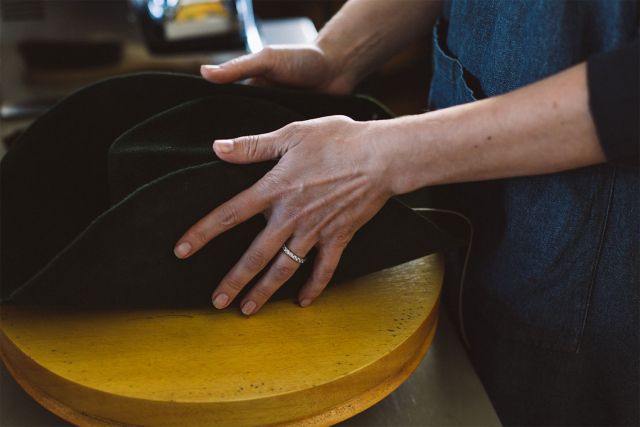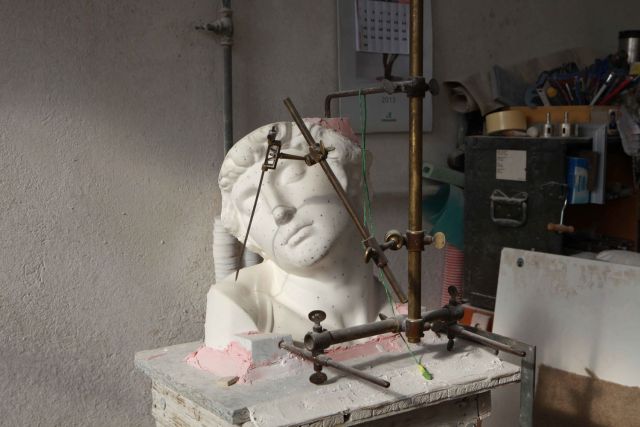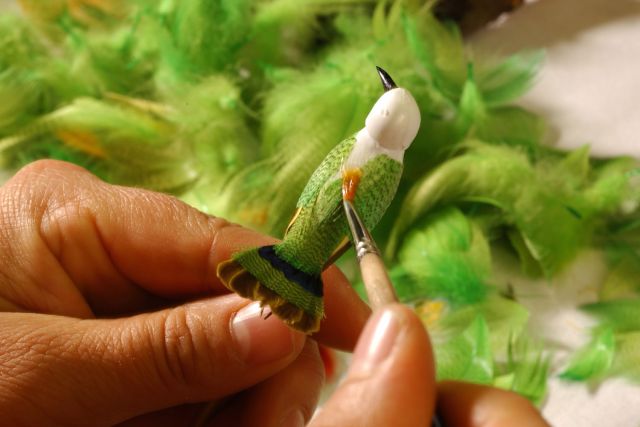Chorevontas Ginekes means “Dancing Ladies” in Greek. On the top part of the ring, two ladies were carved dancing the night away, jumping with their arms raised. This ring was hand carved in wax first and then cast in 18k recycled gold with the ancient technique of lost wax casting. Two diamonds were delicately set on the band to add a little bit of sparkle.
Width 0.98 cm
Length 0.13 cm
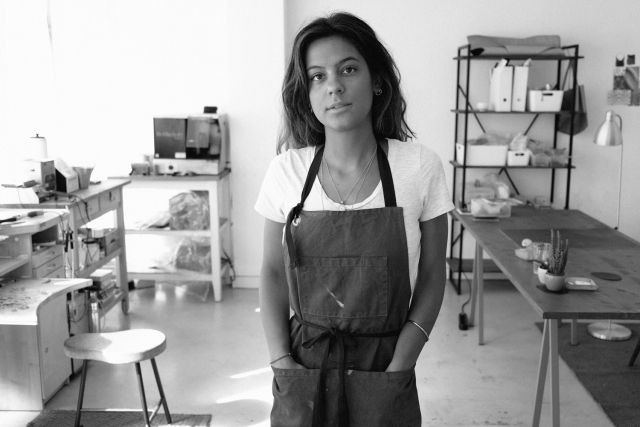
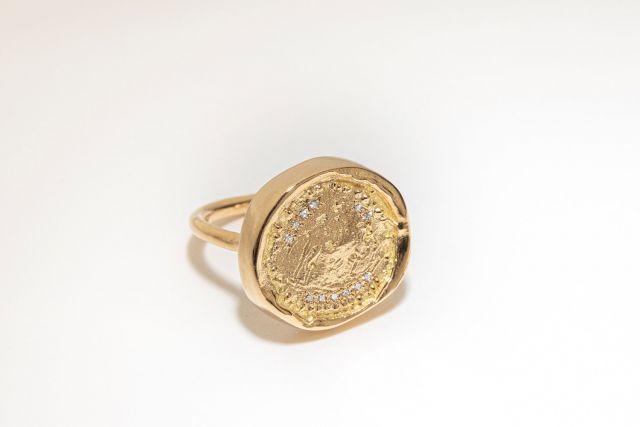
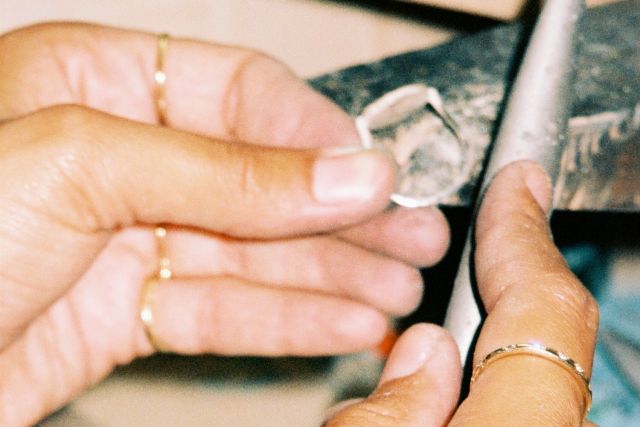
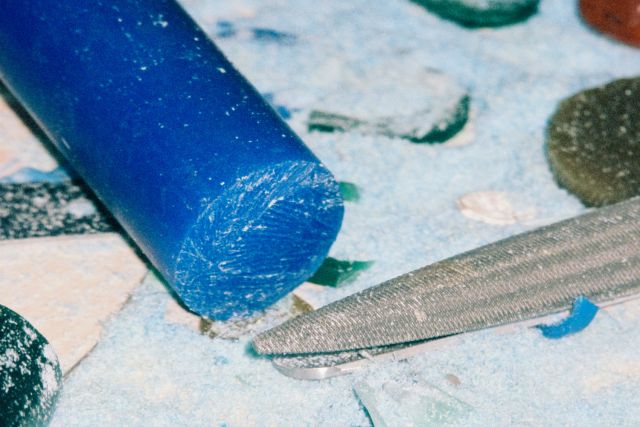
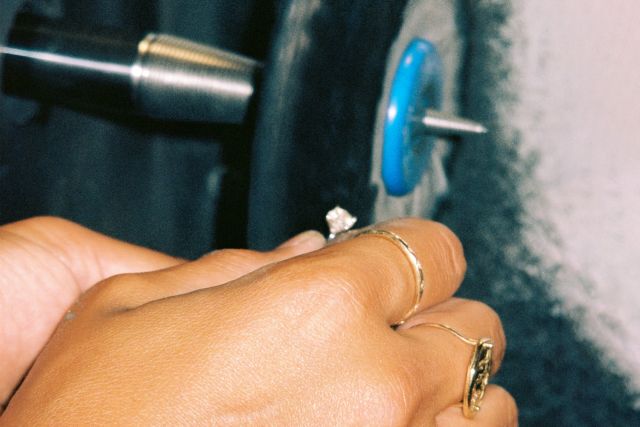
Elisa Pantazopoulos
- ELI-O
- Jewellery maker
- Geneva, Switzerland
- Rising Star
By appointment only
+41 (0)787987070
Jewels with a twist
- • Elisa’s jewellery is inspired by her Greek roots
- • She creates her pieces with the lost wax casting technique
- • She uses locally sourced recycled silver and gold
While Elisa Pantazopoulos was studying at the University of Law in Fribourg, she was fascinated by the jewellery world. She used to spend hours watching videos about jewellery making. As she continued her studies, she realized that she wanted to do something with her hands. When she moved to London, she enrolled in night courses for jewellery making. That was the turning point. She still remembers the powerful feeling she had the day she made her first ring. Once graduated, Elisa studied jewellery making at Holt’s Academy and in 2016, she launched her own jewellery business ELI-O. For Elisa, the beauty of jewellery is that you can keep it forever, and the strong connection between the jewel and its wearer.
Read the full interviewWorks
Photo: ©All rights reserved

Photo: ©All rights reserved
Daphne means “laurel” in Greek. The Daphne ring was inspired by ancient Greek archaeology, ceramics and jewellery. In ancient Greece, wreaths were awarded to victors, both in athletic competitions and poetic meets. This ring was hand carved in wax and then cast in 18k recycled gold with the ancient technique of lost wax casting.
Width 1 cm
Length 0.22 cm

Photo: ©All rights reserved
The kathisti gineka or seated woman in Greek with rubies set all around. A seated woman was hand carved on the top part of the coin ring. The ring was made in wax first to give a vintage feel and texture and then cast in 18k recycled gold with the ancient technique of lost wax casting.
Width 1.2 cm
Length 1.6 cm

Photo: ©All rights reserved
On the Daphne Gouri you can see two branches of laurel engraved. Since Antiquity, the laurel wreath has been regarded as a powerful symbol of victory. In Ancient Greece, wreaths of laurel leaves crowned victors of athletic competitions of the Ancient Olympic games and were also awarded at the Ancient Greek Pythian Games at Delphi. The ring was made in wax first to give a vintage texture and then cast in 18k recycled gold using the ancient technique of lost wax casting.
Width 1.8 cm
Length 45 cm

Photo: ©All rights reserved
On this coin, a seated woman who is deeply lost in her thoughts was carved. Its organic shape and faded carving remind you of an antique piece. A 1mm diamond was set on the side to add a little sparkle.
Width 1.8 cm
Length 1.7 cm
Length 45 cm





